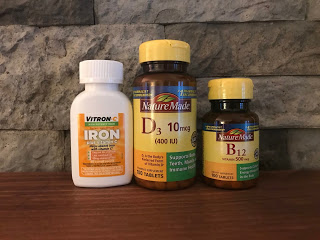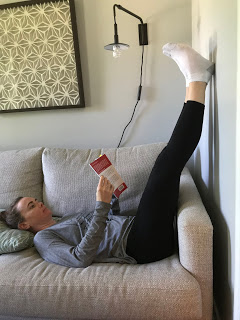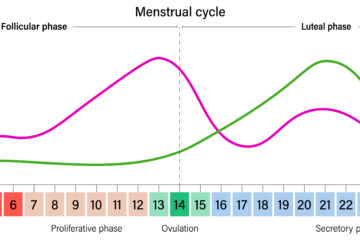What I learned about performance blood testing – by Teal Burrell
Guest post by Runner Teal
Thank you Teal Burrell for allowing us to repost this blog post. Follow Teal on Instagram @runnerteal or visit her at her blog milestothetrials.com to follow her story to the starting line of the US Olympic Trials!
Blood Test Fails
Sometime this past March, frustrations about sub-par training led me to the idea that my iron levels might be low again. I’ve had low iron in the past (and excessively low ferritin, which stores iron), a condition that means muscles have a harder time getting the oxygen they need and performance suffers.
Last month I finally got my blood tested. The long story short is that my ferritin levels are on the upswing (but likely were low and contributed to my poor training this winter) and that I have other hormonal issues that may be contributing to poor recovery. Along the way to finally discovering this, I made seemingly every mistake in the book, which is a bit embarrassing to admit. But I’m sharing them below anyway in the hopes that others will learn from my stupidity honesty.
Mistake #1: No follow up test
I first realized my ferritin was a problem in 2012 and started taking the iron supplement Vitron-C. I started to feel better, so that was good enough for me. But I never actually tested if my iron levels improved or if it was a placebo effect/different training/some other explanation. When I thought my iron levels might be part of my problem this winter, I started taking Vitron-C again and wanted to believe it would help, but I realized I wasn’t even sure if it ever had. (Because of Mistake #3, see below, I didn’t see a doctor before I started supplementing again. This is NOT recommended, as it is dangerous to have too much iron. It turned out okay for
Solution: Get a follow up test to see if your supplements/changes to diet/habits are actually working. I’ve made a calendar reminder to get tested again at the beginning of August, three months after my recent test.
Mistake #2: Not starting again
The biggest mistake I made was that I didn’t start supplementing again after I stopped breastfeeding. When I found out I was pregnant, I switched to taking prenatal vitamins (which have some iron, although not as much as Vitron-C) and continued taking those while I breastfed. I figured I didn’t need such excessive amounts of iron since I wasn’t getting my period (the main reason iron levels are such a problem for female athletes) and I wasn’t really training all that hard. (Although that last part probably stopped being true by the spring of 2018 when I was training for Pittsburgh). Last summer I stopped nursing, switched to a daily multivitamin
Solution: Once again, get tested, especially if you change your supplements/diet/habits. Don’t wait until levels are so low you’ve dug a hole it will take months to get out of.
Mistake #3: Assuming I needed a doctor’s appointment
When I started thinking my ferritin might be a problem again, I tried to make an appointment with a doctor. I didn’t find a primary care doctor when I moved to Richmond three years ago (mistake #8594) and it would be months before I could see one. (I’ve fixed that problem and have my first appointment in… November.) I felt stuck. I had heard about companies like Inside Tracker but they seemed expensive and I didn’t fully understand how you’d get a blood draw without a doctor’s appointment.
Solution: Thanks to the advice of my Oiselle team, I used Athlete Blood Test (similar to Inside Tracker though less well known) and highly recommend it. It was immediate: I signed up online and took the form to a LapCorp near me. I didn’t need an appointment, saw someone within thirty minutes, and the results came back a few days later. It was expensive (I was right about that part at least…) but the athlete-specific information and 10-page analysis they gave me was worth it. When I went to see a doctor for suspected low iron back in 2012, my doctor wasn’t entirely convinced my iron levels were the problem. (I was just running too much!! Of course I feel tired!!) Back then it was my own research that led me to the importance of ferritin and how ridiculously low my levels were. Athlete Blood Test determines athletes’ requirements, which are different than what a PCP may be used to, so this time the research was done for me.

Glad to have an analysis that covered all of these.
Mistake #4: Not resting enough
One of the other benefits of the Athlete Blood Test is it tests a whole slew of things that a PCP might not. It turns out that I may also have been feeling sluggish because my testosterone levels are low while another hormone (sex hormone binding globulin, or SHBG) levels are high. SHBG binds testosterone making it inactive, so when SHBG levels are high, there is less free testosterone and muscles have a harder time recovering.
The mistake here is in not resting enough. While I take a day off every week and try to go to sleep on time, I also cram my day full of activity, often up until the moment my “go the fudge to bed” alarm goes off. I do try to rest for 20 to 30 minutes during my daughter’s nap time but I feel guilty every time I do and am embarrassed to admit it, as if everyone will judge me that my stay at home mom/freelance writer gig is so easy I can lay down midday. (No one has ever said anything like that to my face, but that matters not a whit to that stupid guilt.)
Solution: Obviously, rest more. Get over the guilt, appreciate the time I have to relax and do less (read: stop trying to do all the things!) so I can actually have some relaxing time in the evening before bed. And then go the fudge sleep when that alarm goes off! (I can also focus on eating more healthy fats (something I’ve been doing more of in the last year but still can work to improve) and addressing low vitamin D levels (which, along with my also low B12, can be fixed with supplementation). But the main thing is that elusive work/life/training balance.)

I’d venture to guess this is probably the most common of these mistakes and certainly the hardest for me to correct. The solution isn’t as easy as popping a pill (or three, my current lineup). It means reorganizing and reprioritizing my day so that I can fit in rest more; like maybe finding a way to sit down to catch my breath and eat breakfast after a tough morning workout, instead of scarfing it while standing up, doing the dishes, and assuring my daughter “I’ll play with you in one minute, sweetie!” Truthfully, I’m not sure how I’m going to carve out this time but I know that I need to. Because I didn’t really need a blood test to tell me I’m exhausted.
But it did, which turns out to be the push I needed.
So get that dang blood test.
Dream big,
Teal
@runnerteal


